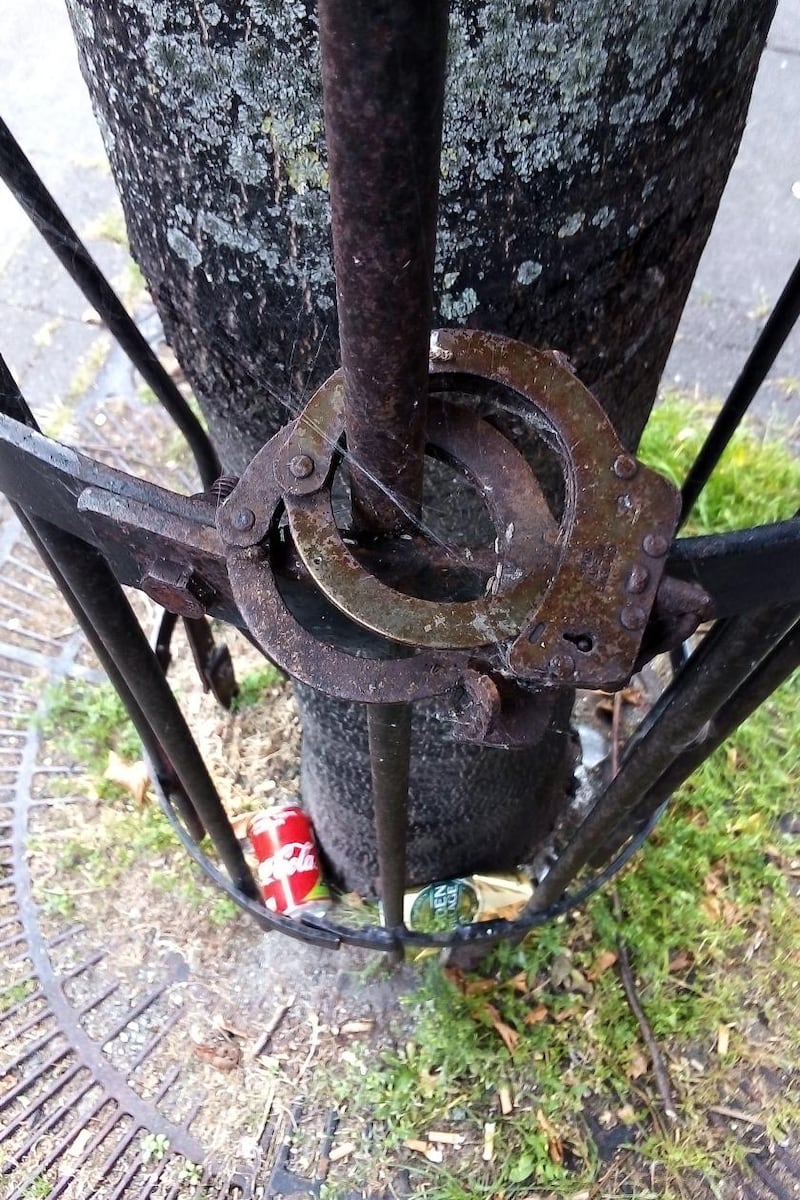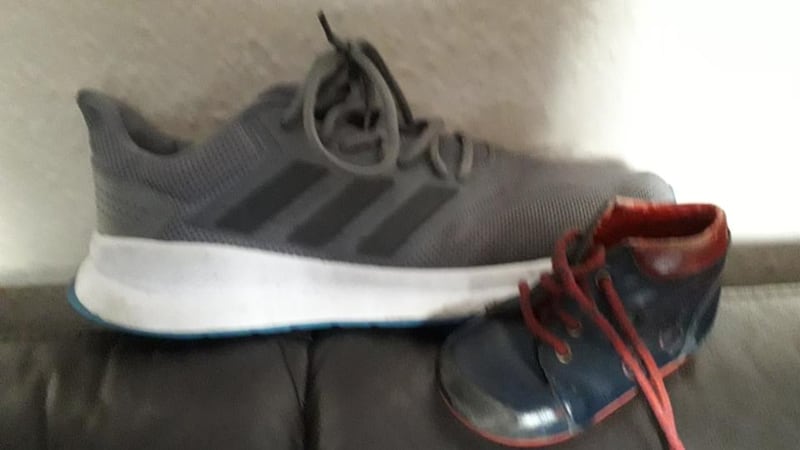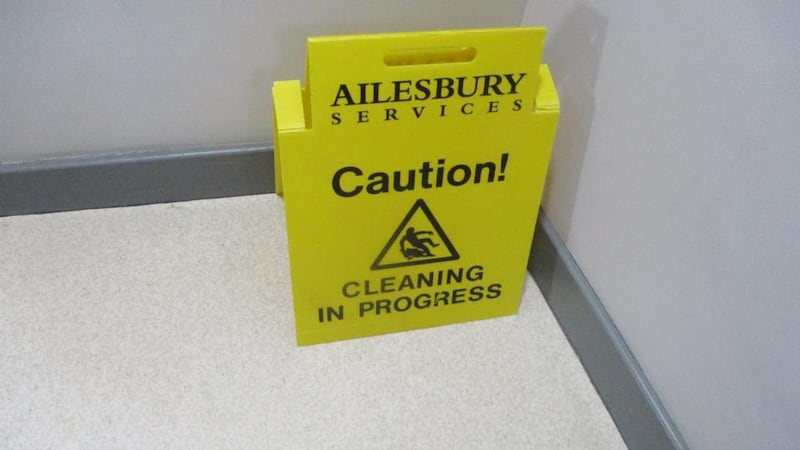Next Saturday an exhibition called The Lived Experience of Addiction opens at Dublin 8’s Copper House Gallery featuring photographs of deceptively ordinary, unexpectedly moving items and landscapes.
The exhibition is spearheaded by sociologist Dr Maria Quinlan and visual artist Patrick Bolger using a method called Photovoice. They worked with the families of addicts, recovering addicts and people in active addiction all connected with the Merchants Quay Ireland drugs service, who took photographs that represented their personal stories and wrote accompanying paragraphs to explain them.
“Photovoice was designed by two American researchers in the 1990s,” says Quinlan. “They were looking at women’s experience in rural China. Rather than layering a lot of analysis on other people’s experience, they just gave them cameras and asked them to document their own lives.”
Quinlan and Bolger have previously run projects like this around childhood sexual violence with One in Four and homelessness in consultation with homeless families and service providers. It has a joint therapeutic, research and advocacy purpose, says Quinlan. “I think the impact is the people who have taken part in these projects are much more open and less shameful of their experiences.”

Why are these types of subjects so stigmatised and shame inducing? She references the Hungarian physician and trauma expert Gabor Mate. “[He] has talked about how all of us have some trauma or addiction... I would say we silence it because we’re not ready to talk about it ourselves.”
Eileen
“This is the clock my son made when he was in Francis Farm [a rehab facility]” says Eileen, showing me one of her photographs. “I could see all the care that went into it and that all the time marked on that clock since I got it is good time. Underneath [the clock] is €20 I owed my other son. I couldn’t have done that, years ago. In the old days I had to lock my bedroom to stop him taking things.
“Then I see behind there these are concert tickets my other son bought for him and his girlfriend stuck behind the clock. Every time I looked at that picture, I saw a little bit more and it was all positive. In the past, [those things] would have gone straight out the door.”
![Eileen: My son made me that when he was in St Francis Farm [rehab facility] last year. And instead of all the taking, he actually gave me something. And the thought that he actually applied himself enough to make it meant a lot.](https://www.irishtimes.com/resizer/v2/4E2BCTXUSYDJV3LADKA326D2IY.jpg?auth=9921f8d6a526f0d934ade8a615ab011d52e1dceed6cd840401962591a6e47142&width=800&height=916)
Eileen discovered her oldest child was inhaling solvents when he was fourteen and was hanging around with a gang of troublemaking teenagers. Things began to go missing and he began bullying his siblings. He went from solvents to alcohol and prescription tablets. They ended up in the Children’s Court regularly.
She recalls being in one Garda station where the guards were being entertained by his stoned antics. “He was singing and dancing in the cell. I nearly burst into tears. For them it was entertainment.”
Her son fell out with his friends and isolated himself at home and the teenage gang targeted the house. The family were attacked. The gang smashed the windows of their car and kicked in their door. “I was afraid to leave the house and when I left the house, I was afraid to come back in.”
The gang disappeared but her son spent years bouncing between Eileen’s home and that of his girlfriend, with whom he had a son. Eileen never knew what condition he’d be in when he turned up. He stole from her and occasionally ransacked the house. She withdrew from her siblings and her mother because she felt they couldn’t understand her situation.
She shows me more photographs she took. One features a baby’s runner and that of a grown man. “I’m such a sap. I have all their first shoes. He walked at eleven months. I couldn’t wait to have children, was always minding other people’s babies.

“I don’t know what it is about kids in addiction, but their runners always have to be spotless. It’s strange but they’re always at them with the baby wipes. They could be manky but the runners have to be clean ...
“Runners play some significance in my life. There was murder in our house over runners. He’d take his siblings’ runners and sell them. I used to keep my bedroom door locked so they’d all throw their runners into my bedroom.”
Four years ago Eileen kicked her son out for the last time. This time she Googled: “I’ve just thrown my son out and I need help to keep him out”. She got the number for Merchant’s Quay Family Support Group and she left a message. “That evening I got a phone call, ‘Hello, I hear there’s someone in the house acting the b*ll*cks’… and I thought, ‘Oh thank god.’”
At Family Support Group, whenever she was asked how things were, she instinctively started talking about her son. The facilitator said, “I don’t give a shite about him, it’s you I want to know about.” They helped her to take a firm line with her son, welcoming him home only when he was unaffected by drugs. The group share coping strategies, she says, “like they’re knitting patterns.”
Her son eventually went into rehab and, after one stumble, has been off drugs for 18 months. He’s now 35.
“We spent Saturday on a big long walk with his little boy and we talked all afternoon” she says. “I can’t tell you what we talked about ... Before the conversations used to be so intense. It was so nice ... I’m only getting to know him. He’s a very quiet bloke. A very quiet sense of humour ...
“For so many years you’re not seeing your child, you’re seeing the addict ... I used to feel guilty when one of the others did well because I was sad for him. For the first time I can say I’m proud of all five of them.”
Jason
“From a young age I felt out of place,” says 25-year-old Jason, one of the participants from the recovering addicts group. “I got bullied a lot. I was overweight as a kid ... back then kids could be savage.”
He was very close to his cousins, one of whom died at the age of 14 from a form of sudden death syndrome. Jason began smoking weed and, a few years later, began taking cocaine and tablets. “Everything went away – the anxiety, the bad feelings. I didn’t care what people said. I was playing this character – strong, confident – because when I did those drugs that’s what it felt like.”
In his 20s, he lived in an apartment in his family’s back garden, selling drugs, taking drugs, leaving only to meet his dealer. “I’d leave bags around. You’d find coke on the floor and my ma would come in and see it ... My nanny passed away and she had a little locker full of tablets. I went through them and I would pick up one and take it to see if I got a buzz of it ...
“One day I ended up taking a fit. I had to crawl out to shock myself on the cold pavement and I thought, ‘If my ma and da walked out to see their son dead in their back garden how shocking would that be for them?’ The next day I went and typed ‘rehab centres’ into Google.”
Merchants’ Quay was the first free option he found. They told him what he had to do to get into a treatment programme and he made sure he got into it, though the Friday before he still bought three grams of cocaine. “That’s how mad an addict’s mind is,” he says.
He resisted the treatment initially. “But when I heard [the others] talking about why they took heroin it was the same reason I did coke. They felt depressed and anxious and didn’t feel like they fit in.”

At a certain point, his therapist told him to picture his 10-year-old self and asked what he would say to that child. “And that just broke me.”
When he came out, he says, he “felt really raw ... Taking away the drugs is the easy part ... Now the real shit is happening. Dealing with life and getting around, managing your day-to-day stuff without reverting back to drugs or your old behaviours”
He still attends a Merchants’ Quay day programme and is studying social care because he wants to help young people who are struggling. He tries things now, he says. He tried beekeeping. He has discovered he likes to paint. He plays chess. He’s been awarded FAI coaching badges and a Gaisce award. He just had the best Christmas he has ever had with his family.

He didn’t quite understand the Photovoice concept until he saw the photos taken by some of the others and then it clicked for him.
One sunny morning he went for a long walk listening to Coldplay on his headphones. He took photographs of a foliage-cluttered path that he saw as symbolising his mind once cluttered by darkness and anxiety and another clearer path that he saw as “his road in life now”.
He also went to an old derelict house where he used to go to take drugs. “I wanted to tell that story, but I could also see that though it was a bit damaged, a bit broken, there was beauty around it. Bad things happened there but there’s a bit of beauty coming around it again.”

The Lived Experience of Addiction runs at the Copper House Gallery on March 7th from 11 to 5pm, and from Monday 9th to Wednesday 11th.




















